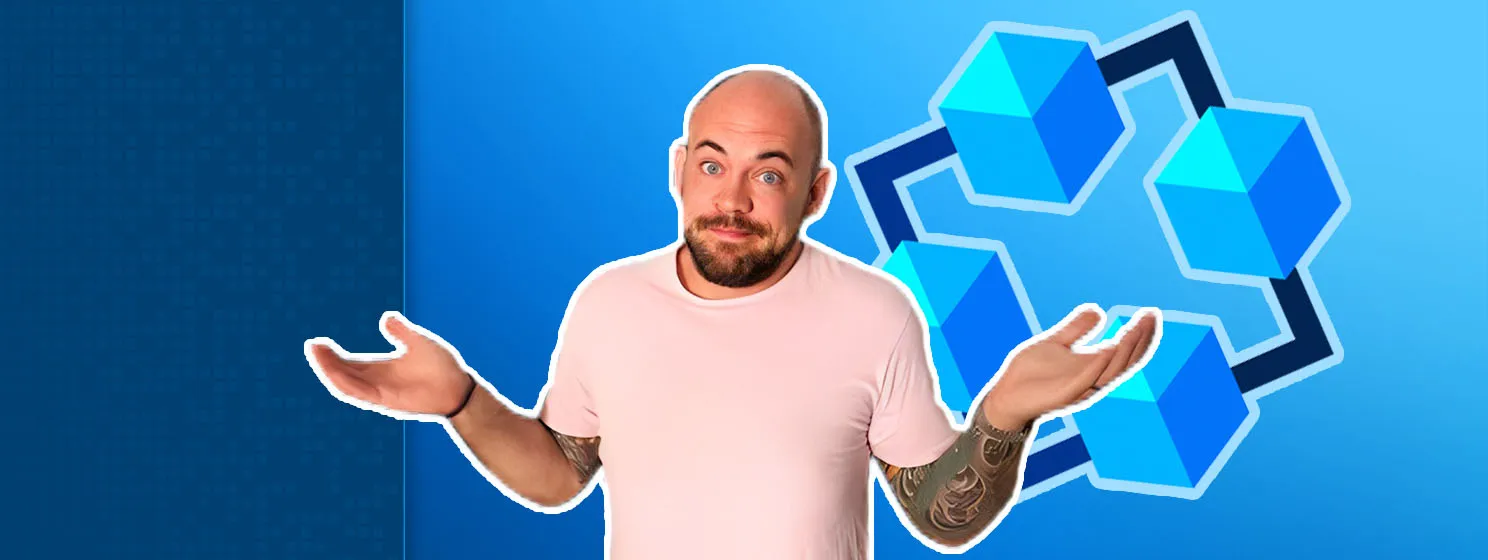|
Getting your Trinity Audio player ready...
|
On April 18, the BSV Blockchain Association held a Twitter space discussing BSV token protocols. Kurt Wuckert Jr., James Belding, Brett Banfe, Brendan Lee, Jab Wahab, David Case, Brenton Gunning, Ken Sato, Thomas Giacomo, and Ty Everett participated as speakers.
— BSV Association (@BSV_Assn) April 18, 2023
James Belding talks about tailored approaches to meet issuer needs
Belding opens the discussion by saying that Tokenized considers utility and user/issuers’ needs and desires as guiding principles. They explored all the possibilities, starting with the outcomes they wanted to achieve in mind, and worked their way back to technology.
A lot of BSV token protocols are fairly close in terms of value proposition, Belding says. The main differences are at the issuer level. He doesn’t think many people have put themselves in the position of issuers and thought about what they need to manage tokens effectively. For issuers, tokens represent relationships, and the designs must be tailor-made to specific business needs.
Kurt Wuckert Jr. discusses colored coins and 1Sat Ordinals
Wuckert then talks about tokens as a high-level concept in Bitcoin. He casts his mind back to colored coins, saying they are the first thing he heard of that could be considered tokens. Painting or coloring satoshis would allow them to be stablecoins, NFTs, pointers, and more. This has been his personal favorite way to implement tokens, but nobody has wanted to do it.
Wuckert then explains that he’s a fan of 1Sat Ordinals, and GorillaPool offers some extra infrastructure to help it along. He likes this protocol because of its simplicity and says it’s just a different way to count satoshis. “It’s an elegant way to say that a sat is a sat plus some extra value,” he notes.
Noting that there are probably ten different token protocols on BSV, Wuckert believes that 1Sat Ordinals is so low level that it allows us to interoperate, including in ways that use the existing tokens protocols.
Brendan Lee asks what tokens really are
Lee begins by talking about tokens in general. He says that if the issuer isn’t offering something of value that’s related to a person’s ownership and control of a token, then it’s unclear what the token even is. He sees a lot of the “crypto mentality” in situations where issuers mint tokens, sell them on marketplaces, and have nothing to do with them.
Elas has its own token issuance mechanism, which Lee hesitates to call a protocol. Using it, an issuer splits out a bunch of satoshis, and each gets labeled as a particular token and indexed as such. These tokens can be transferred with simple scripts like P2PKH; the only condition is that the wallet being used needs to understand it is a token and not mix it back together with other kinds of satoshis.
“It’s all about keeping things as simple as possible initially so that the complexity you have to build in later is easy,” Lee says. This can allow for the building of all sorts of interesting use cases.
David Case talks about different token use cases
Case begins by saying he agrees that Ordinals are low-level and intrinsic to Bitcoin, and there are many token use cases that don’t require issuers to become currencies, etc. He believes there’s value in having something that you own that can be updated and transferred on the blockchain. Because Ordinals have unique serial numbers, indexers can point at them, enabling the tracking of them through time.
Case says there are many things we can do by defining tokens ourselves. There are different levels of definitions as to what tokens are, but in the end, they all run on a blockchain that allows us to prove the intentions of what someone was doing, what has happened with a token over time, etc. There are different use cases for tokens, and not all require strictly defined rules about issuance, usage, and other such factors.
“You’re working at different layers, but those layers are completely compatible with each other,” he says.
Jad Wahab wants to see a fully tokenized world
Wahab has spent a lot of time working on wallets for nChain and the Bitcoin Association. He says there are some things he likes and others he thinks might cause issues. He hopes to see a fully on-chain world where everything is interoperable and composable. He’d love to live in a world where everything is tokenized.
Wahab recommends not getting caught up in technical details that might not matter in the end. He says many of the token protocols are trying to achieve the same thing, and focusing on moving into a tokenized world in a way that’s as simple as possible is important.
Deggen Kellenschwiler on wallets, applications, and Ordinals
Kellenschwiler wears multiple hats in the BSV ecosystem. He begins by saying he has been deeply involved with developing applications that mint and interact with tokens for a couple of years now. To him, defining tokens is difficult, and a couple of different approaches make the most sense, given their different use cases.
Kellenschwiler finds Ordinals super interesting because it takes a fungible token protocol (Bitcoin) and creates a non-fungible protocol. He points out that people in various positions will have to take different approaches to keep track of tokens (e.g., miners and developers) and that it’s possible to come up with extremely simple application-specific tokens that use the base layer of Bitcoin. He advises people not to get bogged down in deciding between different token protocols because different use cases can use different ones as needed.
Brenton Gunning says blockchains are data and programmable ownership systems
Gunning begins by saying he wishes this discussion had taken place earlier. He says that, after stepping back from RUN, he can see the landscape more clearly and likes what he sees. He thinks Ordinals is interesting and would love to see some consolidation around token protocols in BSV.
Gunning says he has always seen blockchains as data and programmable ownership systems. Tokens are one use-case for that, and RUN was not really a token protocol—they called them Jigs to avoid this confusion. As with some of the others in the discussion, he says it’s difficult to pinpoint an exact definition of what tokens are, and he enjoys the different perspectives shared in this discussion.
Ken Sato wants to see scalable peer-to-peer token transfers with SPV
Sato joins the Twitter space from Japan, and it’s 6 AM with him when it takes place. He says he has been researching token protocols on BSV for the last three years and has tested all of them. Each has pros and cons, and since it’s very early, there aren’t a lot of examples to go on. While his product is almost ready, the team hasn’t yet decided on a token protocol.
Sato notes that all token protocols suffer from the Back to Genesis problem, and he and his team have been working on their own solution and are optimistic about it. He thinks that a token verification solution is necessary for SPV to allow the peer-to-peer transfer of tokens.
Thomas Giacomo talks about STAS
Giacomo works at the BSV Blockchain Association, building tools to make it easier for developers to build applications on the blockchain. He wants to talk about STAS.
With STAS, the token amount and the ownership transfer from sender to receiver using native Bitcoin transactions. The first iteration of STAS was built by TAAL and was intended to serve enterprise-grade use cases. A complete technical audit was undertaken, and STAS is suitable for regulated use cases such as in the banking industry.
Ty Everett encourages experimentation
Everett elaborates on Ken Sato’s point about the general verification and peer-to-peer exchange of tokens via SPV. He says this is relevant to all UTXO-based token protocols, and he supports this approach.
As for token protocols generally, he thinks many different approaches will be applicable. There’s no requirement to follow one particular methodology, and there’s room for everyone to experiment. He sees value in wallets that can interact with various token protocols. He’s not advocating for any particular protocol, but he’s happy to hear Ken Sato talk about verification and peer-to-peer sending of tokens via SPV.
Open floor and discussion
The host then opens the floor for all speakers to give their opinions.
Lee says it’s all good in theory to talk about protocols that anyone can use for anything, but in reality, issuers will want strict control over what their tokens can be used for.
Belding reiterates his stance that things need to be planned out by a core team that tackles all of the key issues, just like Bitcoin was designed. He says that the entire industry has failed to build anything useful other than novelty, and to get to the next stage, real complexity will kick in, which requires planning.
Wuckert counters that we’ve had that, with teams dedicated to node software, different token protocols, and more. He says we need to go faster, break more things, and let the chips fall where they may.
Everett says he has read many technical standards (around 50) and has room for a lot more. He encourages people to share their thoughts on them, creating dialogue and a better understanding of the different approaches that exist.
The host then takes user questions, which you can hear about by listening to the Twitter Spaces episode via the link at the top of the page.
Ordinals on BSV! Luke Rohenaz explains their Utility and Value on the CoinGeek Weekly Livestream

 08-22-2025
08-22-2025 





